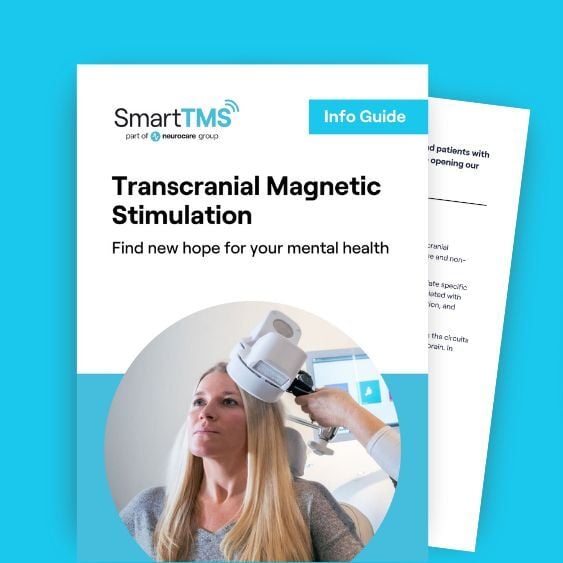Alternative Mental Health Treatments; Xenon Inhalation Therapy and Hyperbaric Oxygen Therapy
February 7, 2023 - Smart TMS

At Smart TMS, our practitioners are dedicated to learning about alternative mental health treatments to stay informed of treatment options. In this article, Roxy and Nikki are writing about xenon therapy and hyperbaric oxygen therapy, both novel approaches in the treatment of certain mental health disorders.
Xenon inhalation therapy
What is xenon?
Xenon is a very rare, non-toxic gas. It is non-reactive, meaning that it does not interact with any tissues in the body and leaves the organism within 3 to 4 minutes. It is completely non-toxic and has no side effects.
Origin of Xenon use in medicine
The use of Xenon in medicine and psychotherapy has a long tradition in Russia, where it is gradually spreading to the rest of the world. Xenon was primarily used in war conflicts, for its unique sedative and analgesic properties. Therefore minimising the death toll caused by the accompanying shock from severe combat injuries. Further, it was used as the treatment of post-traumatic syndromes and generally for faster recoveries from all injuries.
How does it work in the brain?
Xenon rapidly enters the brain via the blood-brain barrier, which makes it an ideal general anaesthetic. However, what promotes it as a promising treatment for mental health disorders is its ability to bind to a specific type of receptor in the brain, called NMDA receptors. Xenon works as an antagonist to these receptors, meaning that it blocks their activation. Similar to ketamine which has also been shown to have anti-depressant properties. NMDA receptors have been shown to be dysregulated in depression, as well as involved in the modulation of fear memories which is relevant in trauma disorders.
Xenon as a treatment for mental health disorders
Xenon is effectively used in treating acute and chronic stress disorders, as well as the treatment of depression and insomnia. Xenon can restore a healthy neurochemical balance of the brain and has adaptogenic and nootropic properties, soothing stress and relieving anxiety. Recent studies are investigating its potential therapeutic benefits in panic disorders. A 2017 study showed that the anti-panic effect of xenon administration can last for at least 6 months after the completion of treatment. It also shows that the severity of depressive disorders accompanying panic disorders can be significantly reduced with xenon.
Xenon has been shown to be effective in the treatment of addictions by reducing psychological and physical dependence on addictive substances.
Despite promising results, Xenon is not yet approved by the U.S. Food and Drug Administration, however, is available in Europe and very popular in Russia and the Czech Republic.
Hyperbaric Oxygen Therapy
What is Hyperbaric Oxygen Therapy?
Hyperbaric oxygen therapy (HBOT) involves breathing pure oxygen in a pressurized environment. In a hyperbaric oxygen therapy chamber, the air pressure is increased to 2-3 times higher than normal air pressure. The increased pressure increases the lung capacity of gathering oxygen and the extra oxygen can help fight bacteria and trigger the release of growth factors which promote healing.
Origins of Hyperbaric Oxygen Therapy
Hyperbaric oxygen therapy originates in 1662 when the first hyperbaric chamber was used to treat certain respiratory diseases. In the 1940s, the U.S. Navy started using it to treat deep-sea divers suffering from decompression sickness. HBOT is now an FDA-approved treatment for anaemia, burns, carbon monoxide poisoning, and osteomyelitis. However, it has not been approved for depression, migraines, asthma etc.
HBOT for Mental Health and Brain Health
Studies are being carried out to assess the clinical effectiveness of hyperbaric oxygen therapy for mental health disorders like depression. Hyperbaric oxygen therapy is thought to be an effective form of depression treatment due to the increased oxygen levels improving neuronal functioning which impacts stem cells and neurotransmitters. This ultimately helps balance brainwave activity, which evens out the chemicals produced in the brain.
One study looked into the effects of hyperbaric oxygen therapy on psychological issues like depression and anxiety as well as nerve function after incomplete spinal cord injury (ISCI). After eight weeks of treatment, results showed that HBOT effectively treated depression and anxiety in patients at a similar level to psychotherapy and that it significantly improved nerve function and the ability to do daily activities.
In a study of 63 healthy ageing adults, hyperbaric oxygen therapy was shown to induce cognitive enhancements by increasing cerebral blood flow, which is critically important to keep the brain supplied with oxygen and energy to sustain normal function.
Conclusion
It’s always interesting to learn about alternative mental health therapies for conditions such as depression or anxiety. At Smart TMS we advise that Transcranial Magnetic Stimulation can sit alongside most alternative treatments to complement a patient’s treatment journey. This is because TMS has minimal side effects. Furthermore, TMS is a medication-free, non-invasive, outpatient treatment, therefore the likelihood of any alternative treatment being incompatible with TMS is close to none. Our practitioners are very informed in providing you with additional information that can support your mental health journey, beyond TMS treatment.
Authors, Roxy, Smart TMS Hampshire Practitioner and Nikki, Smart TMS Birmingham Practitioner.










